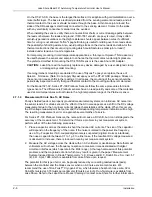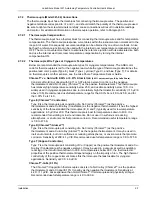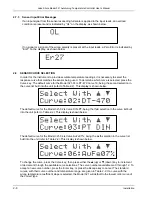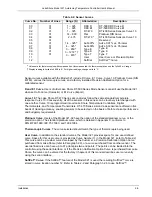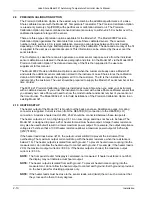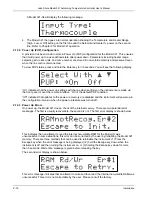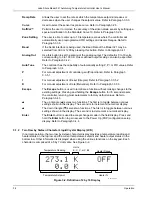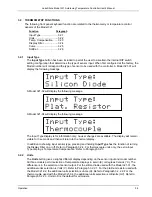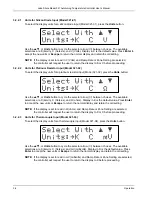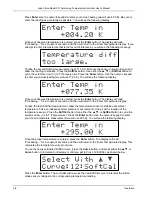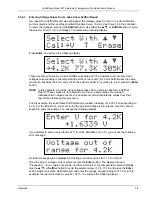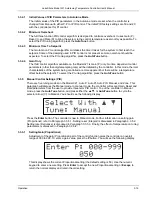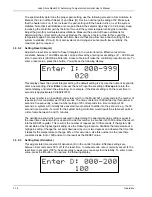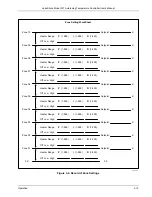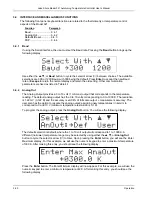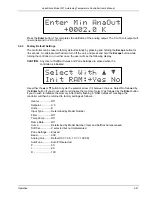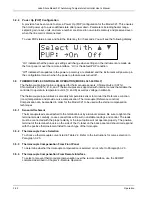
Lake Shore Model 321 Autotuning Temperature Controller User’s Manual
Operation
3-7
SoftCal can be implemented in one of two ways: as a method or a service.
1. The Customer may perform the SoftCal procedure. This would involve using the Model 321 and
the silicon diode sensor to sense either two or three sources of a stable temperature. For a 3
point SoftCal, the Customer must provide stable temperatures of 4.2 K (Liquid Helium), 77.35 K
(Liquid Nitrogen), and 295 K (Room Temperature). For a 2 point SoftCal, the Customer must
provide stable temperatures of 77.35 K and 295 K. The procedure to follow is provided in
Paragraph 3.2.6.2. User performed SoftCal has the advantage of nulling both sensor and
controller inaccuracies.
2. Lake Shore provides an inexpensive SoftCal Calibration Service. This service will provide the
Customer with the voltages corresponding to the 2 or 3 point calibrations. The calibration consists
of a modified (T vs. V) Curve 10 Table for a specific DT-400 Series Sensor. A SoftCal Report is
generated that includes the voltages for data points and a unique sensor curve table interpolated
from these 2 or 3 points. The procedure for entering these voltages is provided in Paragraph
3.2.6.3.
Using either method, the Model 321 will create a new curve for this specific diode, which is stored as
Curve 12 in the controller memory. This procedure can make an inexpensive Band 13 diode more
accurate than our tightest Band 11 diode (but, of course, with the interchangeability).
3.2.6.1 SoftCal
Errors
The calibration cannot be transferred from one sensor to another. A SoftCal calibration will
compensate for some of the temperature error of the controller if an instrument is used to do the
calibration. If the sensor is calibrated outside the instrument, the specified accuracy of the
instrument must be added to the sensor accuracy.
SoftCal accuracy also depends on the precision of the setting points. An error in the setting
temperature can actually degrade the sensor performance beyond the normal tolerance bands. For
example, the boiling point of nitrogen at standard pressure is near 77.4 K. During a storm, this can
change as much as 0.2 K because of the change in atmospheric pressure. These types of errors
must be added to the sensor accuracy specification.
3.2.6.2
Customer Performed SoftCal
The Customer may locally perform the SoftCal procedure using their own controller and silicon
diode sensor. Although not as convenient as obtaining a Lake Shore SoftCal Report, it has the
advantage of nulling the error of both the sensor and the controller as a system, thereby eliminating
much of the controller error. Depending on the temperature range of interest, the Customer has
the option of doing a 2 point or 3 point SoftCal. This example will assume a 3 point SoftCal. If only
2 points are required, then omit the steps associated with reading the voltage at 4.2 K.
Requirements are a stable temperature source at three temperatures: 4.2 K (Liquid Helium),
77.35 K (Liquid Nitrogen), and <300 K (room temperature). It does not matter in which order
the SoftCal data are taken.
NOTE:
Allow the instrument to warm up for
≈
1 hour before beginning the SoftCal procedure.
In this example, we will take our first SoftCal measurement around 4.2 K. Immerse the temperature
sensor in Liquid Helium and allow the controller temperature reading to stabilize. Press the
SoftCal
button. Use either the
s
,
t
, or
SoftCal
button to cycle the selector arrow (
→
) to T (Temperature).
You will see the following display.


